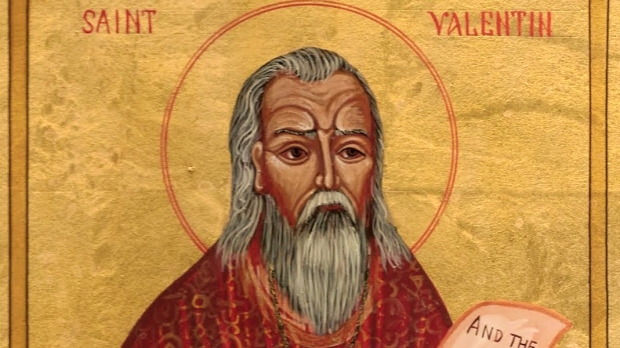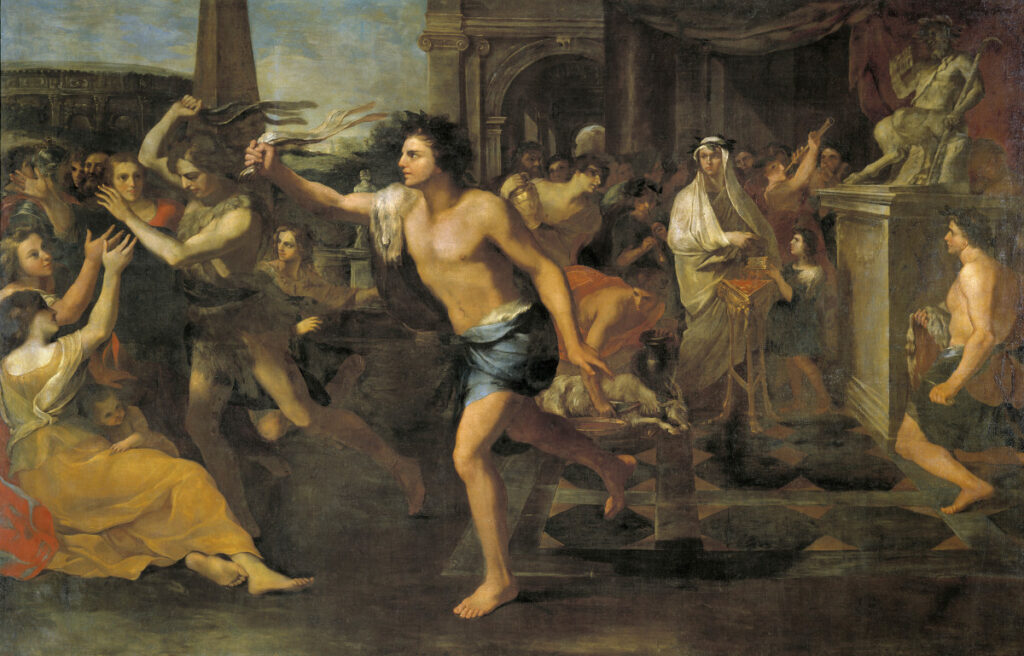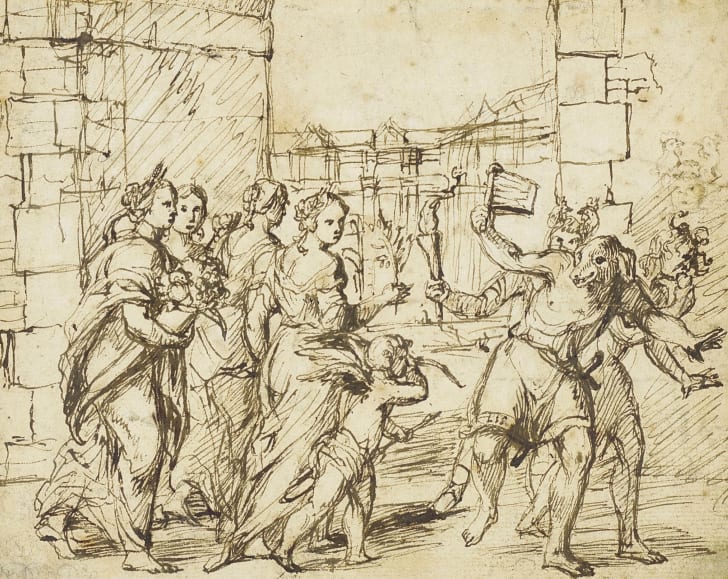IS ST. VALENTINE THE PATRON SAINT OF LOVERS?

Valentine’s Day, celebrated in Europe and some other regions of the world, with many customs and practices associated with it, falls on 14th February every year. The commercial world, along with the electronic media, take the lead in reminding the people of the upcoming event. What does this day signify and who was St. Valentine? A Sri Lankan Catholic priest, an expert on liturgy, reflects on the celebration of this event in his own country and leaves a message for the young Sri Lankans.
According to historic records, there were three saints by the name of Valentine. One of them was martyred in Africa with his companions but nothing much is known about him. The other two-one a bishop from Genoa in northern Italy and the other a priest-were martyred on 14th February in the 3rd century during the reign of the Roman emperor Claudius II, also named “Gothicus” (214-270 A. D.). As both of these saints were decapitated at the behest of the emperor on the same day, though of different years, many believe that their martyrdom originates from a single legend which became splintered and the gruesome incident, therefore, refers to one and the same person.
Folklore and certain documents record that the priest Valentine (some say that it was bishop Valentine of Terni near Rome in central Italy) defied an edict of Claudius II who banned or postponed the marriage of youths in his empire, who were to be recruited to his army, as it would diminish their military prowess and make them homesick for their wives and children when they were in the battlefield. Valentine, who clandestinely married the youths, was thrown in prison to be beheaded. The legend has it that the jailor of the prison, named Asterius, challenged Valentine to prove the power of his God by restoring the eyesight to his blind daughter named Julia. On praying over her eyes, Julia was miraculously cured of her blindness and Asterius embraced Christianity. The emperor, angered at his conversion, had him decapitated along with Valentine. Another legend says that Julia loved Valentine but the veracity of the story cannot be confirmed. However, on the eve of his execution, Valentine wrote a letter to Julia, signed as “From your Valentine”. This has given rise to the custom of the greeting cards of today on Valentine’s Day carrying these words. The name of the sender is never mentioned and everyone becomes a ‘Valentine’. It is said that this custom, to a certain extent, helped to link the saint with lovers and married couples.
Lupercalia: fertility festival of the Romans
Anyone visiting souvenir shops in Rome could buy a special souvenir that symbolises the city: a small statue of a she-wolf suckling two little children. The story of this souvenir is very interesting. Amulius (794-752 B. C.) was a Roman king who ordered to drown his twins in the river Tiber as a punishment for the disobedience and infidelity of his wife Rhea Silvia who was seduced by god Mars, god of war in Roman mythology, thus conceiving the twins. The servant who was commissioned with this task sympathised with the children and put them in a basket and floated it down the river. They were saved by god Tiberinus, Father of the River, and the twin brothers survived under the shade of a tree by the river bank, whereupon a she-wolf suckled them in a cave now known as Lupercal. Finally, they were brought up by a shepherd named Faustulus. The twins, named Romulus and Remus, grew up and founded Rome.
Since the 6th century B. C. this she-wolf was honoured on 15th February in a Roman festival named Lupercalia. It was also held for the fertility of women, to appease evil spirits, purify the city and bring health. The festival was also known as “Februa” giving the name to the month of February.
The priests, taking part in the ritual, killed a goat and a dog and applied blood on the forehead of two other priests who then stripped off their clothes. The blood was wiped off with a piece of cotton soaked in milk (the red roses given on Valentine’s Day symbolise the colour of the blood). Then the two priests spanked the bums of young married women with the skin of the goat they had just slain, to initiate fertility. The women believed that they, without fail, would be conceived due to this ritual. With the passage of time, the festival rid itself of its improper rites when a matchmaking lottery was introduced, in which young men drew the names of women from a jar. The couple would then live together for a year and sometimes get married or be separated thereafter if the match was not right. Therefore, this festival, at that time, was considered one for uniting couples.


Cupid, the little winged Roman god of desire, erotic love, attraction and affection, is also associated with Valentine’s Day. In Roman mythology, Cupid is the son of Venus, goddess of love and Mars, god of war.
Pope Gelasius I, who died in 496 A. D., observing that the rites associated with Lupercalia, were diametrically opposed to Christian morals and decorum, sought to superimpose Christian principles on the pagan rites of the Romans, thus diverting the attention of the people to give an ethical basis to the celebration, by introducing a Christian feast-feast of St. Valentine-on 14th February. By doing so, the church leader wanted to emphasise the importance of martyrdom of the saint for the cause of uniting couples in holy matrimony.
The event which attained its present status with the customs of lavish spending of money on mass-produced greeting cards-known as “Valentines”-flowers, chocolates and other gifts, dining in restaurants, etc. is said to have no connection whatsoever with the saint or the Roman festival of fertility and purification or Pope Gelasius I. It all began with the 14th century English poet Geoffrey Chaucer (1340-1400) who was also a government servant. The 1575th verse in one of his poems reads thus: “On this feast of St. Valentine all birds come to find their mates”. Chaucer penned his verse on the occasion of the engagement of King Richard II of England (1367-1400) to princess Anne of Bohemia or of Luxembourg in 1381. (The princess died in 1394, supposedly of a plague at the age of 28) This verse inspired the people of England, particularly the nobility. Meanwhile, a duke named Charles, who was incarcerated in London Tower, wrote a poem to his wife in 1415 ending in these words: “From me, your loving Valentine”. This letter is still kept in the London Museum. Besides, king Henry V (1836-1422), hired a poet to write a ‘Valentine verse’ for the princess whom he loved.
Saint’s name deleted from the Roman calendar
After the Second Vatican Council (1962-65) the hagiographies (literature of the lives and legends of saints) were subjected to re-examination in the wake of which the names of certain saints were removed from the General Roman Calendar in 1969 due to paucity of historical records. Among them were saints Valentine, Christopher (patron saint of travellers who died c. 251 A. D.), Barbara (patron saint of lightning and fire of the 3rd century) and Bibiana (patron saint of mental illnesses who died in 360 A. D.). The church fathers replaced St. Valentine with two other saints, namely Saints Cyril and Methodius and their feasts are now celebrated instead on 14th February.
Valentine’s Day is primarily celebrated in the western world, but it is equally celebrated in many East Asian countries with Singaporeans, Chinese and South Koreans spending the most money on Valentine gifts. In India, Valentine’s Day celebrations were spread due to commercial TV channels, radio programmes and love letter competitions, but a 2018 online survey found that 68% of the respondents commented against the event. Hindus, Muslims and Christians of India do not welcome this day. The holiday has been regarded by Indian traditionalists as a cultural contamination from the West and as a celebration “alien to Indian culture”. In 2017, the Islamabad High Court in Pakistan prohibited Valentine’s Day celebrations in public places.
In the predominantly Christian Philippines, Valentine’s Day is the most popular day for weddings while in Lebanon men take women out to dine and buy them a gift. Women are also asked to marry on that day. St. Valentine is the patron saint of a majority of the Lebanese.
In 2012, the religious police in Saudi Arabia reportedly arrested more than 140 Muslims for celebrating the day and confiscated all red roses from flower shops. Only non-Muslims can celebrate the event, but only behind closed doors.
Valentine’s Day in Sri Lanka

In the predominantly Buddhist Sri Lanka too this day has come into vogue in recent times, the commercial enterprises and the media playing a key role to promote the day. In the past some Buddhist monks and Catholic priests organised spiritual and meditation programmes for youths on this day to neutralise or counter the western traditions of the celebration. Sri Lankan Catholic priest Fr. Cecil Joy Perera, an authority on liturgy and director of the “Daham Sevana” seminary in Kalutara, 43 km south of Colombo, deplores the commercialisation of Valentine’s Day even in his own country, similar to the western world. “When the country is undergoing a critical period in its economy our young generation does not need red roses, gifts, symbols of love, etc. We should not encourage such things either”, he told Namo on Feb. 13. Fr. Perera exhorted the young Sri Lankans, irrespective of their creed, to use this day for a deeper understanding of the true meaning of love, without falling a prey to the profit-oriented electronic media.
The priest also assured that Valentine’s Day was not introduced into the island by the Catholic church. “Some might see this as an indecent attempt by the Catholic church to ruin the country’s culture and its cherished values, but this is not so. We should try our best to conscientise the people about the origins and the current practices of this event”, he told Namo.***







